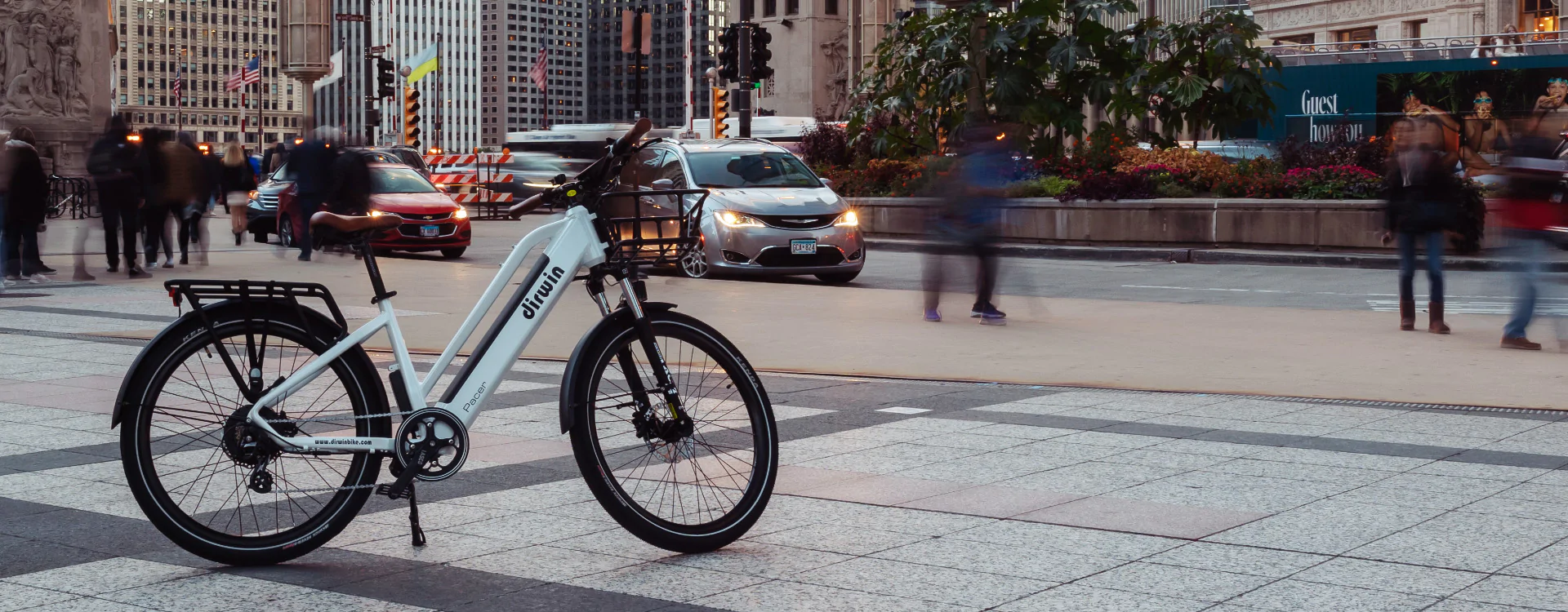Are you ready to embark on a thrilling ride through the world of eBikes? Get ready to experience the exhilaration of exploring the great outdoors with the power and convenience of electric bicycles. In this eye-opening blog post, we will delve deep into the fascinating realm of eBikes, shedding light on the rules and regulations that govern these revolutionary two-wheelers. As technology continues to advance at an unprecedented pace, eBikes have emerged as a game-changer in the world of transportation. With their sleek design and eco-friendly nature, these electric-powered wonders have captured the imagination of adventure enthusiasts and everyday commuters alike. But with great power comes great responsibility, and it is crucial to understand the rules and regulations that accompany the rise of eBikes. Throughout this captivating article, we will unravel the mysteries surrounding eBikes, offering you a comprehensive guide to navigate the legal landscape of these electrifying contraptions. From the speed limits to the classification system, we will leave no stone unturned in our exploration of eBike regulations. So whether you’re a seasoned eBike rider or simply curious about this innovative mode of transportation, you’ll want to buckle up and join us on this thrilling journey of discovery. Together, let’s demystify eBikes and unveil the rules and regulations that shape their existence.
The Legal Landscape: Regulations for eBike Riders
When it comes to riding an eBike, it’s essential to understand the legal landscape and the regulations that govern these innovative vehicles. In many countries, eBikes are classified as bicycles rather than motor vehicles, which means they are subject to different rules and regulations. One of the most important aspects of eBike regulations is the speed limit. In most jurisdictions, eBikes are limited to a certain speed, typically around 20 mph (32 km/h). It’s crucial to adhere to this speed limit to ensure your safety and comply with the law.
Another key regulation for eBike riders is the classification system. Different countries have different classifications for eBikes based on their power output and maximum speed. For example, in some places, there may be separate classes for pedal-assist eBikes and throttle-controlled eBikes. It’s important to familiarize yourself with the specific classification system in your area to ensure you’re riding within the appropriate category.
Safety First: Helmet and Equipment Requirements
Just like traditional bicycles, safety should be a top priority when riding an eBike. Wearing a helmet is not only recommended but also mandatory in many jurisdictions. A properly fitted helmet can protect you from head injuries in case of an accident or fall.
In addition to helmets, there may be other equipment requirements depending on where you ride your eBike. Some areas may require front and rear lights for visibility during low-light conditions or reflective gear to enhance your visibility on the road. It’s crucial to check local regulations regarding equipment requirements and ensure that your eBike is equipped accordingly.
Sharing the Road: Interacting with Pedestrians, Cyclists, and Motor Vehicles
eBike riders share the road with a variety of other road users, including pedestrians, cyclists, and motor vehicles. It’s important to understand how to interact safely and courteously with these different groups.
When it comes to pedestrians, always yield the right of way and give them ample space when passing. Slow down when approaching pedestrians on sidewalks or shared pathways and use your bell or horn to alert them of your presence.
When sharing the road with cyclists, it’s essential to follow the same rules that apply to traditional bicycles. Ride in designated bike lanes whenever possible and signal your intentions when turning or changing lanes. Remember to give cyclists enough space when overtaking them.
Interacting with motor vehicles requires extra caution. Always obey traffic laws, signal your turns, and be aware of blind spots. Stay visible by wearing bright clothing or using reflective gear, especially during low-light conditions.
Where to Ride: Exploring eBike-Friendly Routes and Trails
eBikes open up a world of possibilities for exploring new routes and trails. However, it’s important to know where you can legally ride your eBike. Some areas may have specific restrictions on where eBikes are allowed.
In urban areas, eBikes are generally permitted on roads and bike lanes unless otherwise specified. However, it’s crucial to be aware of any local regulations that may restrict eBike access in certain areas or require permits for riding in specific zones.
When it comes to off-road trails and natural areas, there may be additional regulations governing eBike usage. Some trails may have restrictions on motorized vehicles or limit access to pedal-assist eBikes only. Always check with local authorities or trail managers before venturing into off-road areas with your eBike.
eBike Etiquette: Interacting with Pedestrians, Cyclists, and Motorists
Being a responsible eBike rider goes beyond following the rules and regulations. It also involves practicing good etiquette and being considerate of others on the road.
When passing pedestrians or cyclists, give them a wide berth and slow down to avoid startling them. Use your bell or horn to signal your presence, especially when approaching from behind.
When riding in groups, be mindful of other road users and avoid blocking paths or impeding traffic flow. Ride single file when necessary and communicate with hand signals or verbal cues to ensure the safety of everyone in the group.
Finally, always be respectful towards motorists. Follow traffic laws, yield when necessary, and avoid aggressive behavior on the road. Remember that eBikes are still relatively new to many drivers, so it’s important to set a positive example of responsible eBike riding.
Registration and Licensing Requirements: Do You Need to Register Your eBike?
The registration and licensing requirements for eBikes vary depending on where you live. In some jurisdictions, eBikes are treated similarly to traditional bicycles and do not require registration or licensing. However, there may be certain restrictions based on age or power output.
In other areas, particularly those with higher-powered eBikes or specific speed limits, registration or licensing may be required. It’s essential to check with local authorities or transportation departments to determine the specific requirements for your eBike.
Going the Extra Mile: Understanding Battery and Charging Guidelines for eBikes
eBikes rely on batteries for their power source, so understanding battery guidelines is crucial for optimal performance and longevity.
Firstly, it’s important to follow the manufacturer’s recommendations for charging your eBike’s battery. Overcharging or undercharging can affect the battery’s lifespan and performance. Most eBike batteries are designed to be charged fully before each use and should not be left in a discharged state for extended periods.
Additionally, it’s essential to store your eBike in a cool, dry place when not in use. Extreme temperatures can negatively impact the battery’s performance and overall lifespan. Regularly inspect the battery for any signs of damage or wear and replace it if necessary.
The Future of eBike Regulations: Anticipating Changes and Updates in the Legal Landscape
As eBikes continue to gain popularity, it’s likely that regulations surrounding them will evolve over time. It’s important for riders to stay informed about any changes or updates in the legal landscape.
Advocacy groups and industry organizations play a crucial role in shaping eBike regulations by working with policymakers and advocating for rider rights. By staying involved with these groups, riders can contribute to the ongoing discussions surrounding eBike regulations and help shape a future that is favorable to both riders and other road users.
In conclusion, understanding the rules and regulations surrounding eBikes is essential for every rider. By familiarizing yourself with local laws, practicing safety measures, and being considerate of others on the road, you can enjoy all the benefits that eBikes have to offer while ensuring a positive riding experience for everyone.

